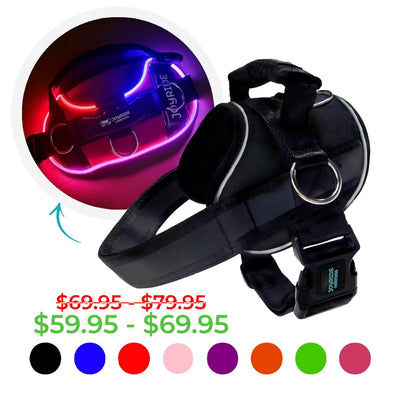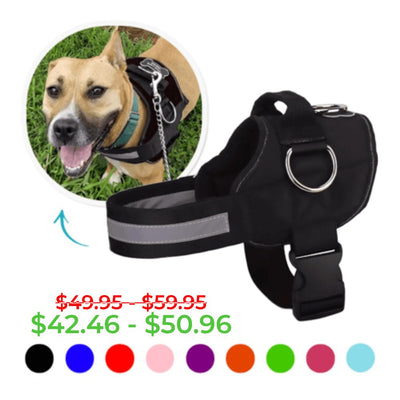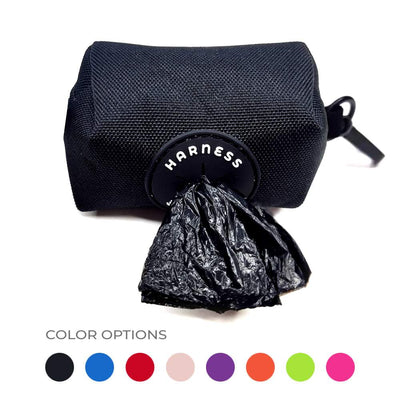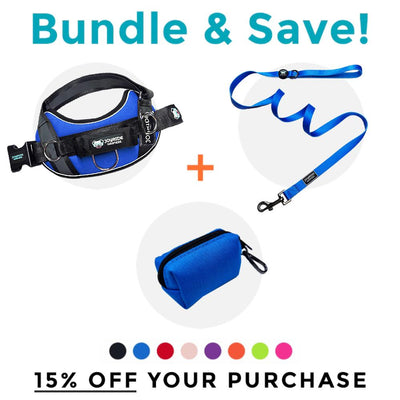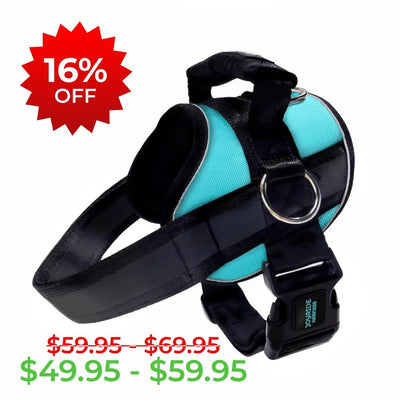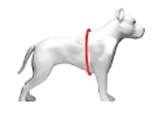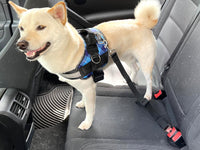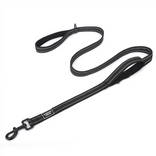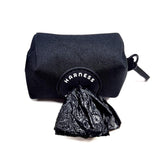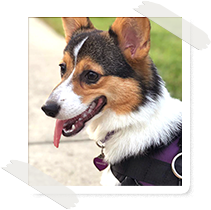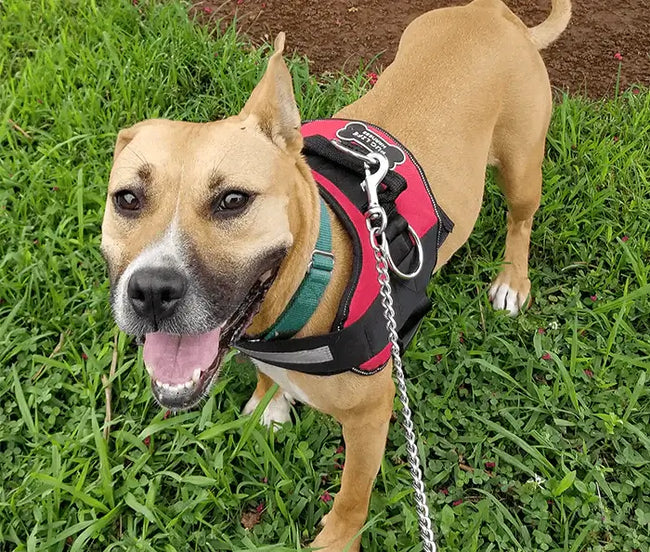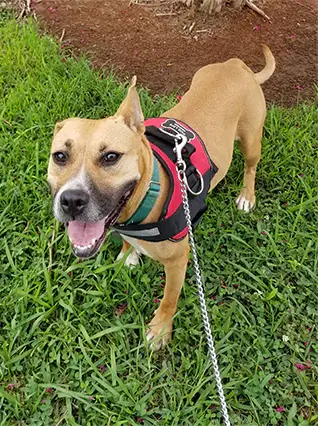How to Measure a Dog for a Harness
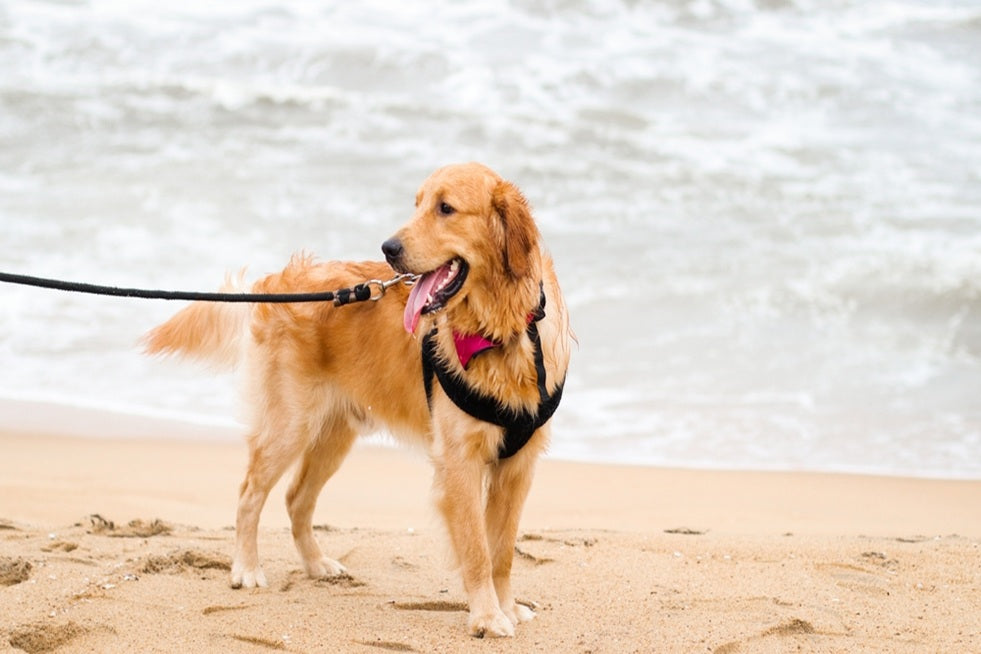
Choosing a dog harness is more of a matter of how to obtain a comfortable and secure fit that will keep your dog safe walking and on outings, rather than one of convenience or fashion. To size your dog incorrectly can lead to discomfort or injury. This guide will explain why you need the right measurements and takes you through an easy guide on how to measure for a dog harness that will fit like a glove.
Basic Measuring Guide
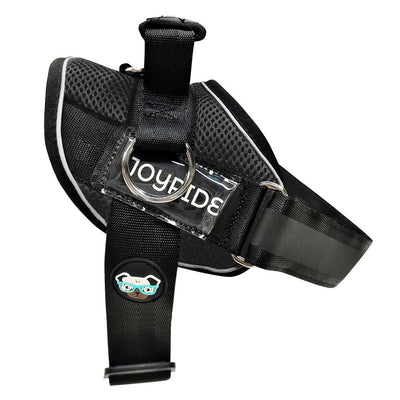
It is easy to take a dog's measurement for a harness, but it must be accurate. Take your dog's measurement with a flexible measuring tape as follows to obtain your dog's perfect neck, chest, and back measurements.
Neck Measurement
Start by taking a measurement around the base of your dog's neck, where it meets the shoulders. It's not the same as a collar measurement, which is taken slightly higher. You want the tape measure to be snug but not tight around the neck, with lots of room to spare for comfort. If your dog is very fluffy, make sure you press through the fur carefully to get a more realistic reading. Get the circumference measurement, since this will be important in selecting a harness that will fit comfortably but not tightly.
Chest Measurement
The most important measurement for harness fit is chest girth, since this is where most designs derive their shape and support. Wrap a tape measure around the widest part of your dog's chest, typically just behind the front legs. Position the tape measure level with the ground and near the body but not tight. Some dogs will try to wriggle at this stage, so having some treats available will keep them still. Measuring a dog for a harness ensures the harness will not be too tight or too loose.
Back Length Measurement
Finally, measure the back length to ensure proper harness positioning. Starting from the base of the neck (where you measured the neck girth) and measuring down to the base of the tail. This is for harnesses with back straps or panels, so they won't interfere with your dog's movement or ride awkwardly over their spine. How do you measure a dog for a harness?. This step is crucial for achieving the perfect fit.

Tips to Find a Perfect Match
Proper measurement is just the start. You will need to perform a bit of adjustment of the harness once you receive it as well. Start by getting the straps adjusted so they are sitting flat against your dog, but not so flat that they are rubbing against their skin. A good rule of thumb here is a two-finger rule. Take two fingers and try to slide them between the harness and dog's body in several areas. If it's snug but you can fit your fingers in comfortably, then it's going to be fitted right. This process is critical to understanding how to measure a harness for a dog correctly.
And finally, always check for symmetry. The harness should be sitting flat on both sides of your dog's body with no twisted or unevenly tightened straps. Test the fit by walking your dog around briefly, watching for signs of distress or restricted movement. Adjust accordingly and be sure to re-check the fit occasionally, especially if your dog is increasing in size or weight.
Position Your Dog for Safety and Comfort
A well-fitting harness is more than a walk in the park essential; it's crucial to your dog's comfort. By taking a few minutes to meticulously measure your dog and fit their harness correctly, you'll be creating a safer and more enjoyable experience for you both. Whether your dog is small, large, furry, or sleek, these simple steps give you a tailored fit that enables you to enjoy stress-free walks together.
If you’re considering options like our brilliant Joyride dog harness, be sure to contact our friendly team with any questions or concerns. We also provide a sizing guide on our product pages with suggested breeds to make your decision easier.
Happy walking starts with the right gear, so measure carefully and choose well for a happy, safe dog. Measuring for a dog harness ensures the perfect fit for every adventure!

